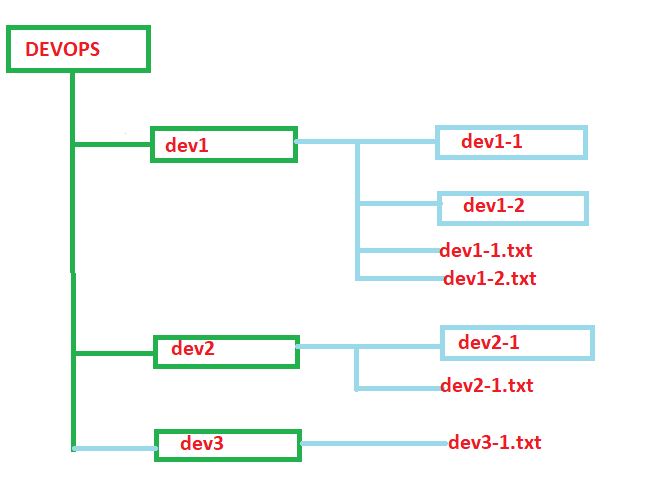
Python的os.walk()方法详细讲解CSDN博客
OS.walk () generate the file names in a directory tree by walking the tree either top-down or bottom-up. For each directory in the tree rooted at directory top (including top itself), it yields a 3-tuple (dirpath, dirnames, filenames). root : Prints out directories only from what you specified.

Python OS Walk Recursive Examples /Decoding/Devops DecodingDevOps
Python os.walk () Example-3 with Recursive: import os x=r'C:\Users\enaknar\Desktop\pycharm\devops' for r,d,f in os.walk (x): for i in d: print (i) here it will print all the directories and sub directories names, but not with complete path from root. so to traverse a directory tree we can use python os.walk () method.

python os.walk example
Example Codes: Use the os.walk () Method With the followlinks Parameter. In this example, we will scan the current directory for files and folders and follow any symbolic links. import os for parent, subdirs, files in os.walk(".", followlinks=True): for filename in files: print(os.path.join(parent, filename)) for subdir in subdirs: print(os.

Python Os Walk Recursive Examples Decoding Devops Decodingdevops Riset
Python os.walk() method is used to generate the file names in the file index tree by walking either top-down or bottom-up.. This function will help you traverse a directory. Each directory in the tree rooted at the top of the directory generates a 3-tuple: dirpath, dirnames, and filenames. Syntax

Python 13 Directories and OS Walk YouTube
Example. The following example shows the usage of walk () method. # !/usr/bin/python import os for root, dirs, files in os.walk(".", topdown=False): for name in files: print(os.path.join(root, name)) for name in dirs: print(os.path.join(root, name)) Let us compile and run the above program, this will scan all the directories and subdirectories.

python os.walk example
os.walk doesn't return a 3-tuple, it yields multiple 3-tuples. From the docs:. For each directory in the tree rooted at directory top (including top itself), it yields a 3-tuple (dirpath, dirnames, filenames).. For how yielding works, see What does the "yield" keyword do? (You can ignore the example code given by OP.) Technically os.walk returns a generator that yields the 3-tuples.

os.walk Traversing a directory tree bottomup using Python Stack Overflow
#os #walk #directories #files #python #tutorial #explain #how #use #subThis is a wonderful and informative class dedicated to the os.walk() method. In this.

os.walk() in Python
This module provides a portable way of using operating system dependent functionality. If you just want to read or write a file see open(), if you want to manipulate paths, see the os.path module, and if you want to read all the lines in all the files on the command line see the fileinput module. For creating temporary files and directories see the tempfile module, and for high-level file and.

Overview In an earlier post "OS.walk in Python", I described how to use os.walk and showed some
The Python os walk() method generates the file names in the directory tree by walking the tree either top-bottom or bottom-top. We now have a youtube channel.. Example. The following below is a simple example - # !/usr/bin/python import os for root, dirs, files in os. walk.

06 os walk YouTube
From docs.python.org:. os.walk(top[, topdown=True[, onerror=None[, followlinks=False]]]) When topdown is True, the caller can modify the dirnames list in-place. this can be used to prune the search.
Python os.walk() A Simple Illustrated Guide Be on the Right Side of Change
March 18, 2022 by Anqi Wu. 5/5 - (3 votes) Python os.walk () - A Simple Illustrated Guide. According to the Python version 3.10.3 official doc, the os module provides built-in miscellaneous operating system interfaces. We can achieve many operating system dependent functionalities through it. One of the functionalities is to generate the file.

OS.Walk and Fnmatch in Python Python Array
The os.walk example returns a generator object that contains a tuple for each directory it visits. Exploring the Tuple Returned by the os.walk Example . The tuple returned by the os.walk example contains three values. The first value is the path to the directory being visited. The second value is a list of the subdirectories in the directory.

Python 17 os.walk() YouTube
The os.walk () method generates the file and directory names in a directory tree by walking the tree using top-down or bottom-up approach. Each directory in the tree is rooted to the top directory. It yields a tuple that contains directory path, directories name and file name. The os.walk () method use os.scandir () method for produce listing.

OS.Walk and Fnmatch in Python Python, Improve yourself, Tutorial
os.walk() is a part of Python's os built-in module.The os module consists of operating system interfaces.It gives us a portable way of using os-dependent functionality in our Python code. os.walk allows us to generate file names in a directory tree by "walking the tree" - (we can get folders, subfolders, and files at every level).A tuple of three elements is returned for each directory in the.
os.walk()の返す値をごにょごにょするshift_path()って関数作った Humanity
In this example, os.path.join() is used to join dirpath and filename to create the full path of each file. It ensures that the correct path separator is used, regardless of the operating system. Some other key points about 'os.walk()' in Python: By default, walk() traverses the directory tree top-down. It means that it starts at the root.

37PYTHON os.walk() Explained and With Multiple Examples YouTube
Python has a cool built-in function in the OS module that is called os.walk () . OS.walk () generate the file names in a directory tree by walking the tree either top-down or bottom-up. For each directory in the tree rooted at directory top (including top itself), it yields a 3-tuple (dirpath, dirnames, filenames).